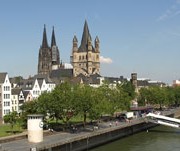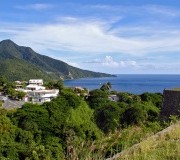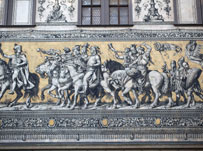Turin is really close to the ski slopes of the Italian Alps, and in fact hosted the Winter Olympic Games of 2006. In preparation for the games, the city was restructured and rejuvenated, making it easy to get around, and even more attractive than before.
It’s a city that is less visited than the likes of Rome, Florence and Milan, but one which has plenty for visitors to discover, from its beautiful architecture and grand boulevards to its fine foods and stunning scenery.
There are a range of Italian courses available in Turin, and anyone taking a course will have plenty to do in their free time that will teach them about the culture and history of the area, and of course, practise their Italian. Here are our top ten recommendations.
1. Visit the Mole Antonelliana and the National Museum of Cinema
The Mole Antonelliana was originally built as a synagogue, but was never used as such after the spiralling costs saw the city’s Jewish community pull out during the construction phase. The building now houses Italy’s National Museum of Cinema – and is thought to be the tallest museum in the world. Within it, you can see film screenings, film posters from decades gone by, along with props and memorabilia including Marilyn Monroe’s black lace bustier, Peter O’Toole’s robe from Lawrence of Arabia and the coffin used by Bela Lugosi’s Dracula.
2. Take in the bustle of Piazza Castello
Castle Square has been the beating heart of Turin for centuries. With the Palazzo Madama (a fusion of a Roman gate, medieval castle and baroque façade) as the central piece, it is surrounded by arcades on three sides, every one built in a different period. It’s from the square that the four big streets of Turin converge: Via Roma, Via Pietro Micca, Via Po and Via Garibaldi, which is known as one of the longest of Europe. The square is also home to the Royal Theatre, the Palace of Giunta Regionale, the Government Palace, the Armoury and the Royal Library.
3. Take a trip into the Italian Alps
Just a short drive or train ride from Turin, and you’ll find yourself in the heart of the Italian Alps. The views are obviously spectacular, and the many resorts perfect for skiing in the winter or walking and biking during the rest of the year.
There are also plenty of mountainside spa retreats for anyone who feels like a little pampering!
4. Visit Turin’s Cathedral and the Chapel of the Holy Shroud
The cathedral, consecrated to San Giovanni Battista, the patron saint of Turin, is the only example of Renaissance architecture of the city. Whilst the building itself it well worth a look, there is one thing in particular within the cathedral that draws thousands of visitors and that’s the Shroud of Turin – said, often controversially, to be the linen cloth that covered the body of Christ after the crucifixion. Although the Shroud is kept within the chapel in Turin, it is only displayed to the public every ten years or so.
5. Enjoy some local food
Piedmont is an area that is rich in gastronomy, and in fact is famous for something called the Slow Food movement. Founded in the mid-eighties by local Carlo Petrini, it was developed to “defend gastronomic pleasure and seek a slower, more aware pace of life.”
Local specialities to Turin include the white truffle, found in nearby Alba, and the area also produces some of the best wines in Italy, especially red wines such Barolo, Barbaresco and Barbera.
You’ll be spoilt for choice when it comes to restaurants in Turin, and many of the Alpine towns have some fantastic, traditional eateries to try too. Another option for food in a more informal setting is the fantastic Eataly, known as the Slow Food Movement’s ‘supermarket’. A huge converted factory, it houses an amazing array of Slow Food–affiliated food and drink, with a separate area for each, including cheeses, breads, meats, fish, pasta and chocolate.
6. Walk around the Castle and the Valentino Park
The Castle and the Valentino Park are situated in the centre of the city near the Po riverside. The park is a public space and very popular with locals. The castle, whose origins date back to the early 26th Century, was acquired by Emanuele Filiberto of Savoy in 1564. Later Carlo Emanuele I bequeathed it to Marie Christine of France who used it as her favourite residence and lived there at length with her court.
Battles were fought around the castle, agreements made and alliances signed. Its vaults record much of Piedmont’s history, and today it is the seat of Turin Polytechnic’s Faculty of Architecture.
7. Explore the Egyptian Museum
The Museo delle Antichità Egizie, as it’s known in Italian, is the only museum aside from the Cairo Museum to be dedicated solely to Egyptian art and culture. The collections that make up today’s museum, were enlarged by the excavations conducted in Egypt by the Museum’s archaeological mission between 1900 and 1935.
The museum is housed in a building specially constructed to house it in Via Accademia delle Scienze, and appears in the original 1969 version of The Italian Job when the robbers transfer the gold bullion to the three Mini Coopers.
8. Head out to the Lingotto complex
The former Fiat factory, transformed by Renzo Piano, is a ten-minute bus ride south of the city centre. It houses the Agnelli family’s impressive modern art collection, a vast conference, exhibition and shopping centre, cinemas and an auditorium, plus two luxury hotels, and is a great place to spend an afternoon.
9. Indulge in a bit of shopping
Turin is often considered one of the best places in Italy for quality shopping. The city’s ‘classic’ shopping street is Via Roma, where, under its porticoes, shoppers can peruse the alluringly displayed windows of the city’s most exclusive shops and boutiques whilst stopping off for a coffee or two at one of the many cafes. Via Garibaldi, the longest pedestrian street in the city, stretching from Piazza Castello to Piazza Statuto, is another popular area, and has a wider range of shops that cater for all budgets.
In the historical city centre, there’s also an array narrow streets such as Via Barbaroux, Via an Tommaso and Via Monte di Pietà, which house small, traditional shops selling locally made goods such as wine, food and jewellery.
10. Visit the Basilica di Superga
The impressive Basilica di Superga is the final resting place of the Savoys, whose lavish tombs make for interesting viewing. Located 10km northeast of Turin, on top of a hill, the terrace in from of the church offers great views of both the Alps and Turin itself.
More about Italian courses in Turin








